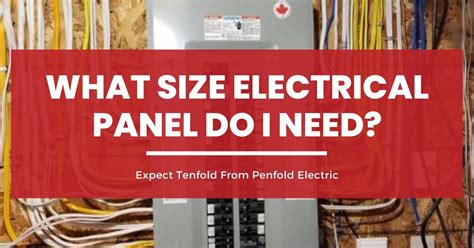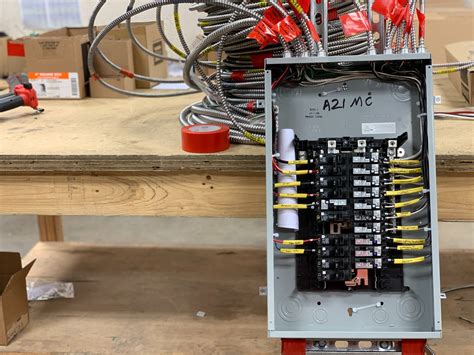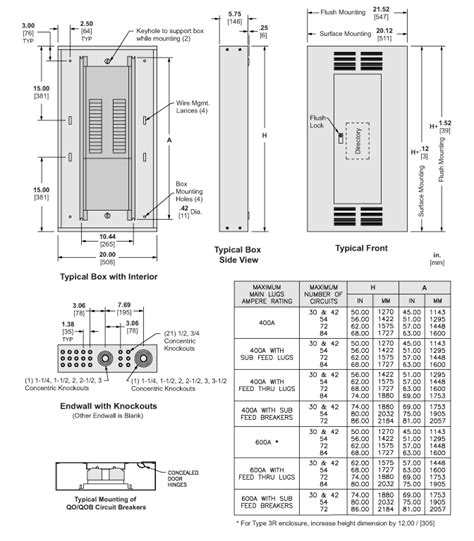electric panel boxes sizes Learn how to choose the right electrical enclosure size for your project, ensuring optimal safety, airflow, and performance with our comprehensive guide. Buy Weatherproof Junction Boxes at Screwfix.com. Protect exterior electrical wiring and connections from damage. Weather and dust resistant. Free returns.Protection Class: IP68 Waterproof / Moisture-proof / Dust-proof. Rubber ring + clamping nut to provide the perfect waterproof, excellent sealing, safe for interior, garden, outdoor lighting .
0 · typical residential electrical panel size
1 · typical home electrical panel size
2 · types of electrical panel boxes
3 · standard electrical panel size chart
4 · standard electrical panel board sizes
5 · electrical panel sizing chart
6 · electrical panel chart
7 · electrical box size chart
1 Redneck Convent Metal Ammo Case – Best Camouflage Ammo Case; 2 MTM ACR8 Ammo Crate – Best Ammo Storage for Hunting; 3 Magnum 53540 – Best Heavy Duty Ammo Storage Container; 4 MTM Ammo Can – .
One of the first things you should do on the path to electrifying everything (or anything!) in your home is to check the size of your home’s electrical panel. This will help you determine if you can add new loads to your existing panel without requiring a panel or service upgrade. For a small home or condo, 125 amps is adequate; and 150 amps is quite satisfactory for many average size family homes, especially if they have any gas-powered . Determining the right size of an electrical panel for your home is an important factor to consider when installing or upgrading your electrical system. An electrical panel, also known as a breaker panel, is a metal box that holds .In today’s step-by-step guide, we will demonstrate how to select the right size panelboard (whether it’s a load center, distribution board, or circuit breaker panel) according to NEC and IEC standards, with worked examples. Related Post: .
Learn how to choose the right electrical enclosure size for your project, ensuring optimal safety, airflow, and performance with our comprehensive guide.Electrical panels come in various sizes and are typically measured by the number of circuit breaker slots they offer. The most common sizes are: 100-amp panels. Standard for smaller homes or apartments, accommodating minimal electrical .
There is a huge selection of electrical boxes, varying by size, shape, mounting device, and composition. One of the first distinctions to note is that of new work boxes and remodel or cut-in boxes. All Phase Electric Company offers a guide to homeowners and business owners on the right electrical panel size for your needs. Read more! Different electrical panels provide 100, 200, or more amperes (or, amps) of power to a home. Homes built between 1950 and 1965 may have 60-ampere fuse boxes, often with just four fuses. Here's more information on the .One of the first things you should do on the path to electrifying everything (or anything!) in your home is to check the size of your home’s electrical panel. This will help you determine if you can add new loads to your existing panel without requiring a panel or service upgrade.
For a small home or condo, 125 amps is adequate; and 150 amps is quite satisfactory for many average size family homes, especially if they have any gas-powered major appliances. Determining the right size of an electrical panel for your home is an important factor to consider when installing or upgrading your electrical system. An electrical panel, also known as a breaker panel, is a metal box that holds circuit breakers that . Learn the different electrical panel box sizes, why they matter and how to find out which size you have in your home.In today’s step-by-step guide, we will demonstrate how to select the right size panelboard (whether it’s a load center, distribution board, or circuit breaker panel) according to NEC and IEC standards, with worked examples. Related Post: How to .
Learn how to choose the right electrical enclosure size for your project, ensuring optimal safety, airflow, and performance with our comprehensive guide.
typical residential electrical panel size

typical home electrical panel size
Electrical panels come in various sizes and are typically measured by the number of circuit breaker slots they offer. The most common sizes are: 100-amp panels. Standard for smaller homes or apartments, accommodating minimal electrical loads. 150-amp panels. A mid-range option suitable for medium-sized homes that require more power. 200-amp panels.There is a huge selection of electrical boxes, varying by size, shape, mounting device, and composition. One of the first distinctions to note is that of new work boxes and remodel or cut-in boxes.

All Phase Electric Company offers a guide to homeowners and business owners on the right electrical panel size for your needs. Read more!
Different electrical panels provide 100, 200, or more amperes (or, amps) of power to a home. Homes built between 1950 and 1965 may have 60-ampere fuse boxes, often with just four fuses. Here's more information on the standard sizes and .One of the first things you should do on the path to electrifying everything (or anything!) in your home is to check the size of your home’s electrical panel. This will help you determine if you can add new loads to your existing panel without requiring a panel or service upgrade. For a small home or condo, 125 amps is adequate; and 150 amps is quite satisfactory for many average size family homes, especially if they have any gas-powered major appliances.
Determining the right size of an electrical panel for your home is an important factor to consider when installing or upgrading your electrical system. An electrical panel, also known as a breaker panel, is a metal box that holds circuit breakers that . Learn the different electrical panel box sizes, why they matter and how to find out which size you have in your home.In today’s step-by-step guide, we will demonstrate how to select the right size panelboard (whether it’s a load center, distribution board, or circuit breaker panel) according to NEC and IEC standards, with worked examples. Related Post: How to .
Learn how to choose the right electrical enclosure size for your project, ensuring optimal safety, airflow, and performance with our comprehensive guide.Electrical panels come in various sizes and are typically measured by the number of circuit breaker slots they offer. The most common sizes are: 100-amp panels. Standard for smaller homes or apartments, accommodating minimal electrical loads. 150-amp panels. A mid-range option suitable for medium-sized homes that require more power. 200-amp panels.There is a huge selection of electrical boxes, varying by size, shape, mounting device, and composition. One of the first distinctions to note is that of new work boxes and remodel or cut-in boxes.
All Phase Electric Company offers a guide to homeowners and business owners on the right electrical panel size for your needs. Read more!

types of electrical panel boxes

metal tube brackets
It also includes an optional rain collar for weatherproof fans. STURDY SUPPORT: You get a solid mount for fans up to 70 lbs or heavy luminaires up to 150 lbs. .
electric panel boxes sizes|types of electrical panel boxes